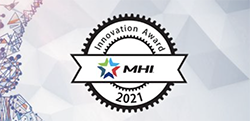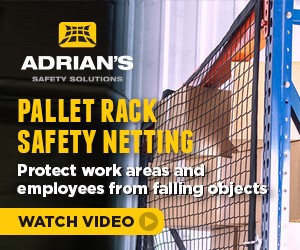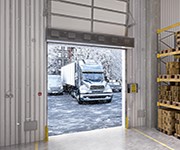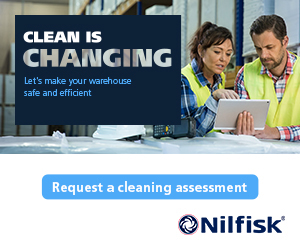 |
|||||||||||||||||
| Archive | Subscribe | Send to a Friend | www.mhi.org | Solutions Magazine | |||||||||||||||||
|
Top Story
Technology and Innovation
MHI Updates
The ASRS Industry Group of MHI recently released "ASRS 101: An Overview of Automated Storage and Retrieval Systems." This document explores the uses and benefits of ASRS technology including a complete list of the 23 ASRS member companies.
The rise of e-commerce has placed unprecedented demands on supply chains; new material handling power technology, based on lithium battery platforms, increase efficiency in the warehouse environment. Learn real-world examples and practical advice on best practices for integrating Internet of Things (IoT), lithium batteries and opportunity charging to power your fleet of forklifts, pallet jacks, reach trucks and other material handling equipment during this September 9 webinar.
The members of the Protective Guarding Manufacturers Association (ProGMA) Industry Group of MHI, recently published a new standard, “ANSI MHI31.2-2021 – Test Method for Crash Testing Industrial Guardrail Barriers and Barrier Posts,” available for purchase. The standard was developed because ProGMA recognized a need to standardize performance and design criteria for the proper utilization of industrial guardrail and post systems. Prior to its publication, no standardized test method had been established to assess the crash performance of these protective devices.
Engineered to store pallet loads on both sides of an aisle, industrial pushback racking storage systems deliver cubic densities that are approximately 25% to 65% greater than selective racking. In addition to publishing the American National Standards ANSI MH16.1 for Industrial Pallet Rack — which details rack design, engineering, construction, and ownership requirements — the members of RMI have assembled a list of pushback rack owner “Dos and Don’ts.” Following these recommendations will enhance both the integrity and reliability of the system, while reducing the risk of injury for workers as they perform their tasks in and around the racking.
Education & Professional Development
Over the past several months, many industries in the U.S., including the transportation and supply chain sectors, have been facing labor shortages. Among the many reasons for these shortages is an education gap for new recruits. At the same time, technology is changing so rapidly that current workers are at risk of falling behind. Education and training are more crucial than ever, especially in a post-pandemic world that is increasingly reliant on technology.
Manufacturing
As with all overhead lifting equipment, workstation cranes should be routinely inspected at a variety of intervals. Sometimes an inspection will uncover damage that can be repaired, though it might need to be removed from service and not used until the repair is completed. Or, if repair is not sufficient, the workstation crane might need to be upgraded or replaced with a new one. To help workstation crane owners make that determination, here are five common signs to look for.
Supply Chain Trends
Pre-pandemic, retailers and their supply chain partners were preparing for moderate, steady increases in online sales volumes every year. Those projections were blown away in 2020, as e-commerce experienced a 32.4% growth surge. As businesses struggled to handle an unprecedented influx of online orders, it became clear why a digital supply chain is essential to their future success. The push for a digitalized supply chain is coming from the top. Gartner’s 2021 survey of company CEOs found that growth and digitalization were their top two priorities.
Workforce
|
|||||||||||||||||










